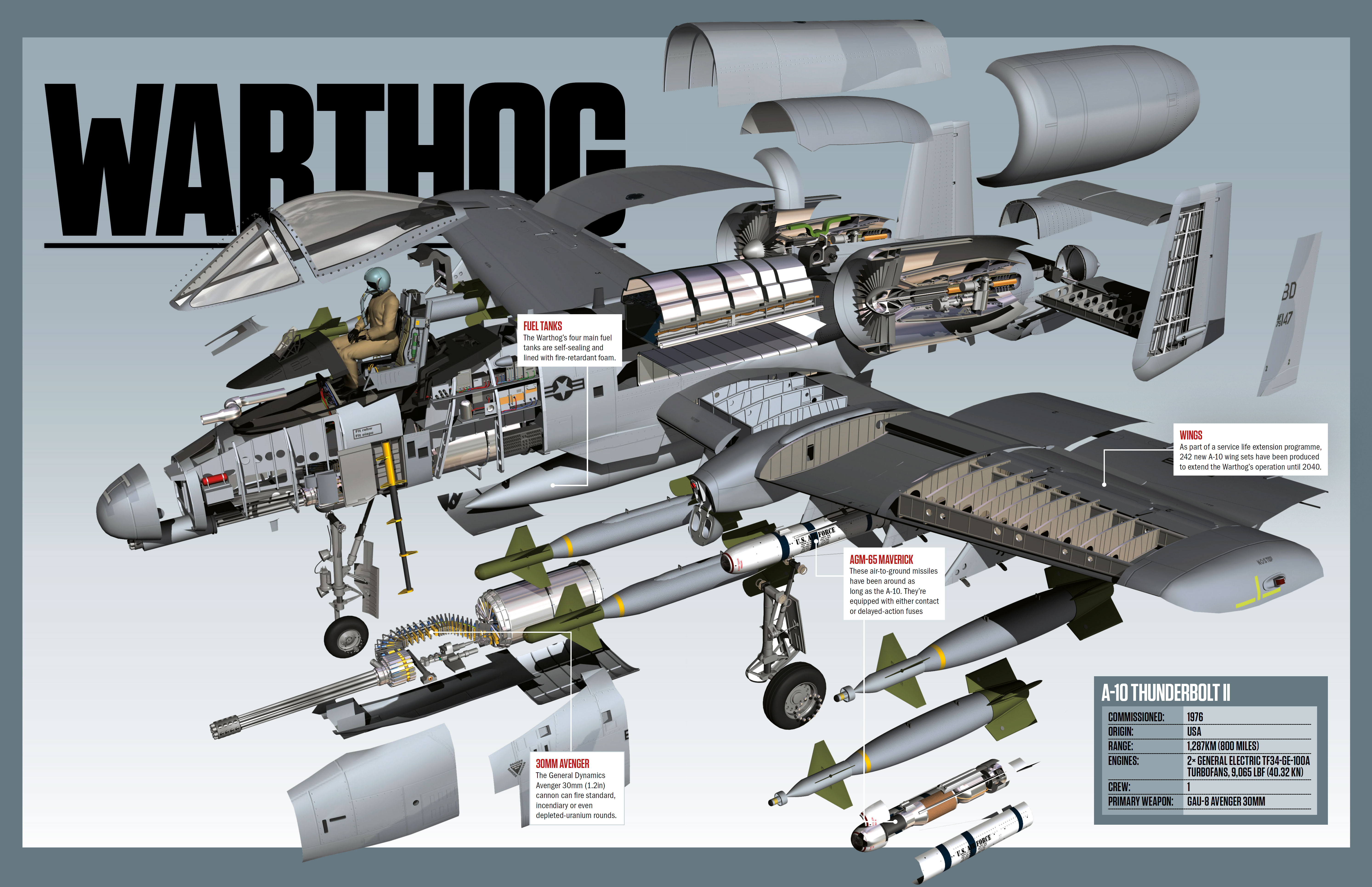The A-10 Thunderbolt is a single-seat, close-air support fighter jet that also goes by the names Warthog and Tankbuster. Developed for the US Air Force by Fairchild Republic Company (now Northrop Grumman), the original commission was for a low-altitude, low-speed close air support aircraft. Work on prototypes began in 1967 and its first flight was in 1972. There are several reasons why the A-10 has weathered 40-plus years of advancing military technology - chief among them its versatility and high survival rate.

The A-10 boasts a short takeoff and landing capacity with a range of nearly 1,300 kilometres (800 miles). Commonly used for troop support and ground attacks, it can loiter for long periods at low speeds and altitudes below 300 metres (985 feet) and it’s capable of soaking up as much damage as it can dish out. The A-10 can take direct hits from armour-piercing and explosive shells, has multiple redundancies for its flight systems and, most incredibly, it can return to base on one engine, one tail stabiliser, one elevator and even having lost half a wing. This hardy design is necessary due to the close support roles it fulfils, exposing the aircraft to ground fire. As a result, it’s well known among US Air Force pilots for its ‘get home’ effectiveness.